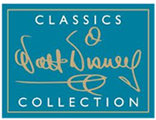
Walt Disney Classic Collections (WDCC)
is a series of collectible sculptures of Walt Disney characters and scenes. The sculptures were initially done under the supervision of the Disney animators and were hand painted and produced in limited editions. They were introduced in July 1992. The sculptures often sold in the secondary market at a multiple of the initial sale price. They ceased production in 2012.
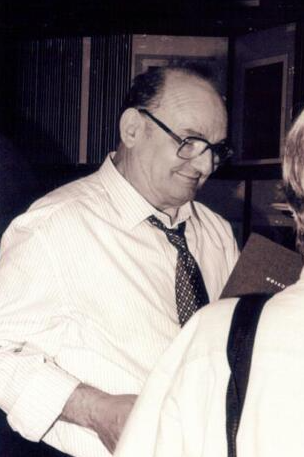
Giuseppe Armani
Giuseppe Armani was an Italian sculptor and artist. Born in 1935 he died in 2006. From an early age he was recognized as a gifted artist. Giuseppe attended the Academy of Fine Arts in Florence and became well known from his artwork at the Art Gallery in Pisa. In 1973 he associated with the Florence Sculture d’Arte in Tuscany. Armani’s works are known worldwide for their detail, life, and colors.
Giuseppe Armani passed away on Saturday, October 28th, 2006, of a massive stroke. There were three things in life that Giuseppe loved: his Family, Music and Art. Giuseppe Armani shared his love of art with us and created art for us. As many of you experienced first-hand, Giuseppe was a charmer. He adored meeting his public. They, in turn, were happy to have him in their lives. Armani possessed a rare talent. He was able to give life to inanimate clay and by so doing he brought beauty and joy into the lives of his collectors. The magnificent creations of his imagination live after him in the gallery of Art and Sculpture he left us.
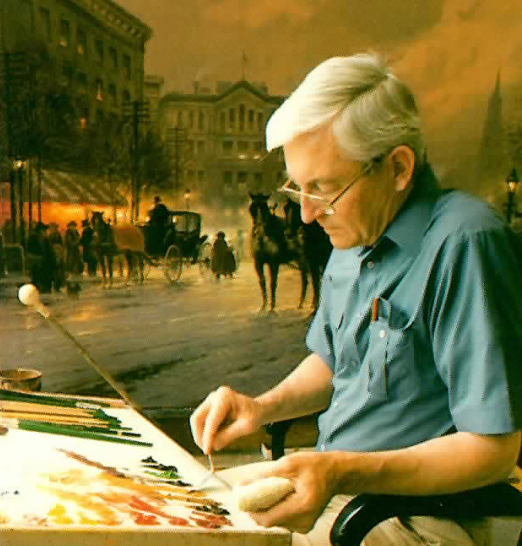
G. Harvey
G. Harvey (Gerald Harvey Jones) (1933-2017) Known for paintings closely linked in mood and subject matter to Edouard Cortes [1882-1962], G Harvey created romanticized street scenes of turn of the century towns in America. Rain slick streets reflect urban lights, and the weather is obviously cold.
G. Harvey grew up in the rugged hills north of San Antonio, Texas from where herds of longhorn cattle were once driven up dusty trails to the Kansas railheads. His grandfather was a trail boss at 18, and helped create an American legend. So the American West was not only the artist’s inspiration but his birthright.
Harvey’s early interest in sketching and drawing slowly evolved into a passion for painting in oils. After graduating cum laude from North Texas State University, Harvey took a position with the University of Texas in Austin; but he soon realized that weekends and nights at the easel did not satisfy his love of painting. He abandoned the security of a full-time job in 1963, and threw his total energy into a fine art career.
Two years as a “struggling artist” followed, but 1965 brought acclaim for the artist’s first prestigious show: The Grand National exhibition in New York where the American Artists’ Professional League presented him with their New Master’s Award. President Lyndon Johnson discovered his fellow Texan’s talent, became a Harvey collector, and introduced John Connally to the artist’s work. Connally was enthusiastic about Harvey’s art; and, on one occasion, he presented a G. Harvey original to each governor of Mexico’s four northern states.
Harvey painted the spirit of America from its western hills and prairies to the commerce of its great cities. His original paintings and bronze sculptures are in the collections of major corporations, prestigious museums, the United States government, American presidents, governors, foreign leaders, and captains of industry. The Smithsonian Institution chose Harvey to paint “The Smithsonian Dream” commemorating its 150th Anniversary. The Christmas Pageant of Peace commissioned Harvey to create a painting celebrating this national event. He was the recipient of innumerable awards and the subject of three books. Through his art, our history lives.
G. Harvey lived in Fredericksburg, Texas, with his wife Pat in a 150-year old stone home built by German settlers. His studio and residence were nestled within the Historic District of Fredericksburg.
Gerald Harvey Jones, known professionally as G. Harvey, died on November 13, 2017, at the age of 84.

Michael Atkinson
Michael Atkinson was born in Texas in 1946. He started painting as a child in the northwest Texas town of Lubbock. Attracted early to the study of architecture, he earned a degree from Texas Tech University, then taught and worked in the field for a time. He soon realized that he was most drawn to the design and presentation aspects of his profession. In the summer of 1974, he took time off to concentrate on his painting.
The response to his work was so great; he made the decision to paint full time. A painting by Michael Atkinson is immediately recognizable by its composition He feels that watercolor permits spontaneity and freedom and can be made to do things on its own utilizing texture, density of color, variation of light and dark.
White space is also an essential element of the “Atkinson look”. In addition to his dazzling medium of watercolor, Atkinson demonstrates his excellent artistic ability with beautiful bronze sculpture. His bronze pieces mirror the electricity of his two-dimensional work, earning a grand reception from his legions of collectors.
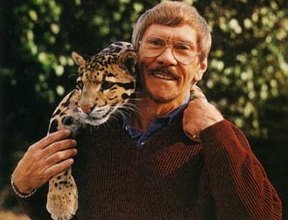
Charles Fracé
Charles Fracé (February 28, 1926 – December 16, 2005) was an American wildlife artist whose work was featured in more than 500 exhibitions, including a solo exhibition at the National Museum of Natural History of the Smithsonian Institution in Washington, D.C. Fracé painted over a hundred paintings from which limited edition prints were produced, which were consistently popular with collectors.
Born in 1926 in the small town of Mauch Chuck (now Jim Thorpe), in eastern Pennsylvania, Fracé lost his father at a young age, and lived with his mother and grandparents. Fracé began drawing at five and taught himself to paint when he was fifteen. His first painting was a portrait of Jesus, which was followed the next year by a portrait of Abraham Lincoln which was presented to his high school principal, and which remains in the town museum. He also played alto horn and trumpet in the school band and was in the school soccer and basketball teams. After working at odd jobs for several years before being persuaded to apply for a scholarship to the Philadelphia Museum School of Art. His self-instructed talent earned him the opportunity, and he worked his way through school, including a stint as an extra for the Philadelphia Opera, graduating with honors in 1952.
In 1955, Fracé began a professional career as a freelance illustrator in New York City. After struggling to land his first paid artist job and working for a year for the local office of the Saturday Evening Post, he befriended wildlife photographer Shelly Grossman. After Fracé sought advice from respected wildlife illustrator Al Dorne, who told Fracé, “stick with it”, Fracé joined Grossman on an assignment in Weeki Wachi, Florida. There, Fracé found the inspiration to paint his first three wildlife paintings of a Great Horned Owl, Sparrow Hawk, and Pondicherry Vulture. Fracé continued painting in this genre, and within the next few years he became one of the nation’s most sought-after illustrators of wildlife. During this time, he began a collaboration with wildlife photographer and preservationist Roger A. Caras. In 1966, Caras published Last Chance on Earth: A Requiem for Wildlife, with illustrations by Fracé. The pair went on to collaborate on twelve more books, the last one being Source of the Thunder: The Biography of a California condor, in 1991.
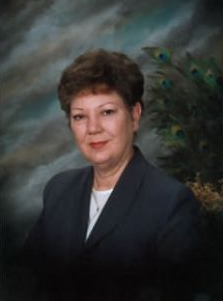
Judy Gibson
Born in Paris, Texas in 1946, Judy Gibson is one of the most sought-after and most recognized artists not only in Texas but throughout the entire country.
“When a person looks at my paintings, I want them to see the deep appreciation for God’s creations that I feel,” Judy says. Gibson has loved and painted animals since early childhood. By the time she was in her early teens, she was painting portraits of prize bulls and horses for area ranchers. She still loves to paint horses and other symbols of the Southwest.
After graduating from East Texas State University in 1968 with a degree in art, Gibson went to work for an art company that sold her paintings in galleries throughout the southwest. Today, Judy enjoys working with oils, manipulating the paint and gaining effects she can’t achieve through other media. When working with water-color, it’s the spontaneity and serendipitous qualities she appreciates. It is these qualities and her love for animals that are the driving forces behind her paintings, no matter what subject she chooses to paint.
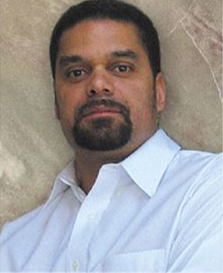
Thomas Blackshear (Ebony Visions)
Known for their quality and beauty, Thomas Blackshear’s Ebony Visions line of figurines were designed to portray the beauty, elegance and dignity of African Americans. Each figurine is a limited-edition piece that is a testimony to Thomas Blackshear II’s incredible sense of design, unique eclectic style and extraordinary mastery of color. This line of collectibles has been described by the term “Afro-Nouveau” due to the figurines being influenced by Art Nouveau and African culture.
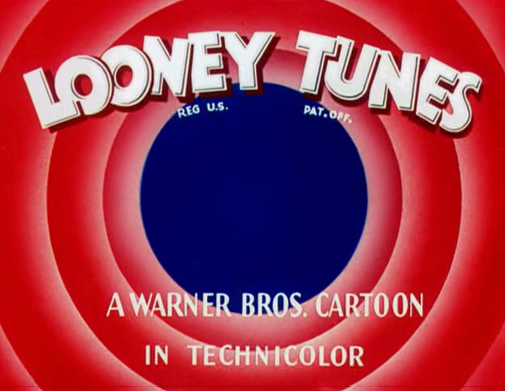
Looney Tunes
Looney Tunes is an American animated comedy short film series produced by Warner Bros. starting from 1930 to 1969, concurrently with its partner series Merrie Melodies, during the golden age of American animation. The two series introduced a large cast of characters, including Bugs Bunny, Daffy Duck, and Porky Pig. The term Looney Tunes has since been expanded to also refer to the characters themselves.
Looney Tunes and Merrie Melodies were initially produced by Leon Schlesinger and animators Hugh Harman and Rudolph Ising from 1930 to 1933. Schlesinger assumed full production from 1933 until selling his studio to Warner Bros. in 1944. The Looney Tunes title was inspired by that of Walt Disney’s Silly Symphonies.[4] The shorts initially showcased musical compositions owned by Warner’s music publishing interests through the adventures of such characters as Bosko and Buddy. However, the shorts gained a higher profile upon the debuts of directors Tex Avery and Chuck Jones and voice actor Mel Blanc later in the decade. Porky Pig and Daffy Duck became the featured Looney Tunes characters, while Merrie Melodies featured one-shot cartoons and minor recurring characters.
After Bugs Bunny became popular in the Merrie Melodies shorts of the early 1940s, Looney Tunes moved from black and white to color production, Merrie Melodies having already been in color since 1934. The two series gradually lost their distinctions, and shorts were assigned to each series randomly. From 1942 to 1964, Looney Tunes and Merrie Melodies were the most popular animated shorts in movie theaters.
Looney Tunes has since become a worldwide media franchise, spawning several television series, feature films, comic books, music albums, video games, and amusement park rides. Many of the characters have made and continue to make cameo appearances in television shows, films, and other media. Bugs Bunny, in particular, is regarded as a cultural icon and has a star on the Hollywood Walk of Fame. Many Looney Tunes and Merrie Melodies films are ranked among the greatest animated cartoons of all time, and five of them have won Academy Awards.
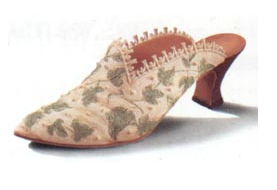
Just The Right Shoe
Just The Right Shoe were a range of hand-painted miniature cold cast porcelain figurines, collectible boxes and musicals have won their designer Raine several awards including in the US the ‘Rising Star of the Year’ award from the National Association of Limited Edition Dealers presented at the 1999 Rosemont shows, and in the UK in 1998 the ‘Best New Collectible of the Year’ award presented by the British Guild of specialist china and glass retailers.
Just the Right Shoe depicted mainly shoe miniatures from different historical periods. These shoes are historically accurate, so as well as forming a unique collection, also show an historical timeline of the shoe.
A ‘Just the Right Shoe Club – The Perfect Fit’ debuted in October 1999, with the club becoming the fastest growing collectors club in 2000. The Charter Year ran until December 31, 2000. The club had its own online newsletter Shoe Scoop and magazine inStep.
The range was extremely successful for a number of years and production moved from Collectible World Studios to Willitts Designs.
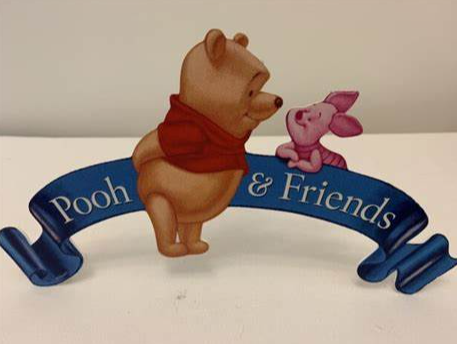
Pooh & Friends
In the heart of the Hundred Acre Wood lives a group of friends who make any occasion more special with a hug, a kind word or a Thoughtful Sort of Gift to treasure and share. Winnie the Pooh means friendship, pure and simple, and there’s no better way to tell a friend “I was thinking of you, and Pooh Bear came to mind,” than with a piece of finely sculpted Hundred Acre Wonder.
Hand-crafted from fine bisque porcelain, Pooh & Friends figurines bring to life not just a moment but an entire story of friendship shared. Hand-painted detail broadens every smile and brightens every eye. As a final touch of keepsake whimsy, each “hand huggable” figurine is adorned with a gold-plated pewter charm. A story card is included to capture the whimsical philosophies of caring and sharing that have made Pooh and his friends our friends for as long as we can remember.
Come wander and wonder with Pooh and his Hundred Acre friends as they celebrate your special days throughout the year as only a bear of very little brain and very big heart can.
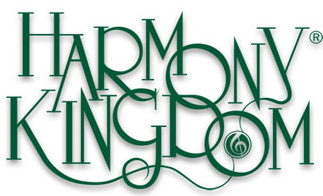
Harmony Kingdom
Harmony Kingdom’s unique collections are handmade of crushed marble and resin in the tradition of the English cottage industry. Artistic Director Martin Perry oversees a growing group of talented artists from Wimberley Mills, his headquarters in the picturesque Cotswolds region of England’s West Country. The whimsical animals of the Treasure Jest series, the beautiful blooms of Harmony Garden, and the entire Harmony Kingdom range all display the attention to detail and quirky sense of humor for which Harmony Kingdom’s artists are known.
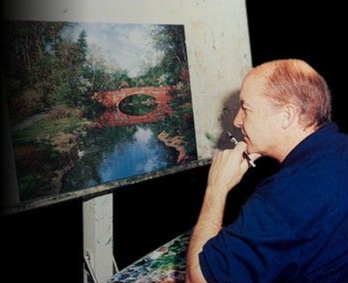
Larry Dyke
Larry Dyke’s devotes his life’s work to the interpretation of the beauty he beholds in nature. His success as one of America’s most loved artists is proof of his distinctive ability to create a scene, which captivates the imagination of the viewer. Dyke’s genius lies in his construction of intricate settings that even the novice art lover can appreciate.
His inspiration and subject matter are fueled by frequent travels to the most scenic views in America, often accompanied by his wife and daughter. In the fall, he travels from his home near Houston to hardwood country Vermont, upstate New York and Tennessee. Over the Summer, he may head west to California or Colorado. Some of his scenes appear almost photographic, due to his exquisite attention to detail, while still retaining an artistic interpretation of the landscape. Dyke begins a piece with a composed sketch on a prepared hardboard surface; it is then refined until it takes his unique perspective.
His deep personal belief in Christianity is the driving force, which guides Larry Dyke’s life and work. In his paintings, Dyke captures not only the physical beauty of the great outdoors but also the spiritual sense of perfection he views as the handiwork of God’s creation.
A Native Texan, Dyke began painting professionally in 1976. His first Lithographs were released two years later and today he has produced more than 100 limited editions and a number of open edition prints. Many of these images were sold out shortly after release and all of Dyke’s limited editions are now actively sought after by collectors.
Since the sale of his first painting, Dyke’s career has been an unqualified success. Dyke’s art has hung in the White House and in the homes of such distinguished personalities as Steve Allen, Shirley Jones, Vincent Price and Billy Graham. His work has also hung in the Vatican. At the personal request of Pope John Paul II, Larry Dyke Painted “Sharing the Faith”, a tribute to the long and important role of the Church in America.
Yet, even with all the accolades for his original art as well as the immense demand for his limited edition prints, Larry Dyke continues to reach inside to strive for the excellence he sees in the natural world around him. “I believe my life and career have been guided by a commitment to my faith,” Dyke says. “It has instilled in me a determination to develop my talent to the fullest.”
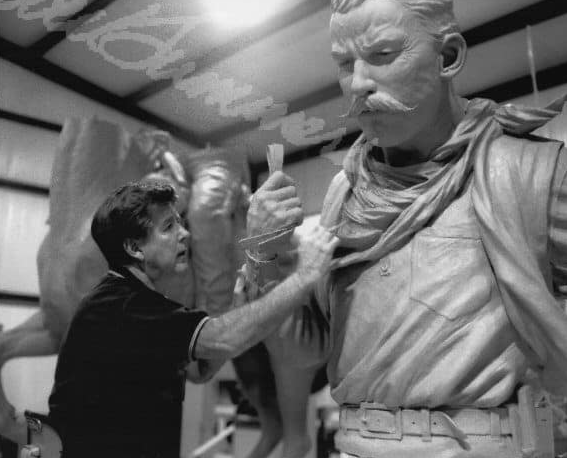
Robert Summers
Robert Temple Summers II (born August 13, 1940) is an American artist in Cleburne, Texas. Summers, who works as a painter and sculptor, has created prominent bronze works displayed in places such as the Texas Ranger Hall of Fame and Museum, the Dallas Pioneer Park the Loews Anatole Hotel, Fair Park, Los Angeles International Airport, and Plano Texas’ Baccus Plaza.
Summers’ studio website, states that Summers has had “no formal art training, save a short course in mixing colors at age 15. He began to explore art as a profession in 1964. His paintings include works in various mediums including; egg and acrylic tempera, oil, dry-brush watercolor, pastel, and pencil. His sculptures have included wax and clay, and currently divides his time between painting and sculpting.
Summers resides in his boyhood home of Glen Rose, Texas with his wife Boo, two of their three sons work with him. Among his associations, Robert serves as Associate Director of the Creation Evidence Museum and has traveled to Turkey and New Guinea on archaeological expeditions in that capacity. Summers also plays bagpipes, practices falconry, sings Contemporary Christian music, and has played lead roles in several professional productions. Much of his Western art demonstrates his love of wildlife and the cowboy spirit of the small Texas town.
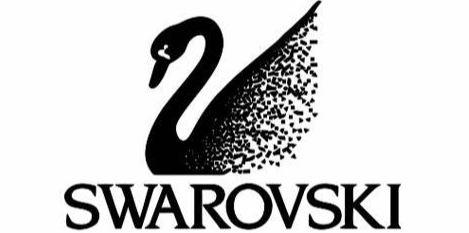
SWAROVSKI
Since 1895, founder Daniel Swarovski’s mastery of crystal cutting has defined the company. His enduring passion for innovation and design has made it the world’s premier jewelry and accessory brand. Today, the family carries on the tradition of delivering extraordinary everyday style.
From inspiration brief to collection launch, Swarovski’s creative process is uniquely prolific. With a focus on trend curation, design, and meaningful branding, every piece tells a story and embodies over 125 years of mastered craftsmanship. The continuous evolution of material and technique makes Swarovski the leader of crystal cut creations.
